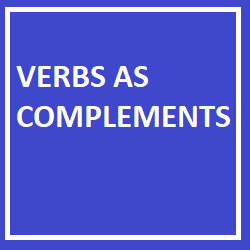Exercise -1: Verb + Object Complement
We named our daughter (Emma/To be) Emma.
Correct Answer: Emma
“Emma” is the object complement that renames “our daughter.”
The committee appointed her (chairwoman/to chair).
Correct Answer: chairwoman
“Chairwoman” is the object complement that renames “her.”
Exercise -2: Verb + Adjective Complement
The weather turned (very cold/to cool) very cold.
Correct Answer: very cold
“Very cold” is the adjective complement that describes “The weather.”
She seems (upset/to be upset) upset.
Correct Answer: upset
“Upset” is the adjective complement that describes “She.”
Exercise -3: Verb + Noun Complement
He became (an engineer/to engineer) an engineer.
Correct Answer: an engineer
“An engineer” is the noun complement that renames “He.”
This smells like (a trap/to trap) a trap.
Correct Answer: a trap
“A trap” is the noun complement that identifies the subject’s condition.
Exercise -4: Verb + Infinitive Complement
I want (to sleep/sleeping) to sleep.
Correct Answer: to sleep
“To sleep” is the infinitive complement that provides additional information about “I want.”
They helped us (to find/finding) to find our way.
Correct Answer: to find
“To find” is the infinitive complement that explains the purpose of “They helped us.”
Exercise -5: Verb + Gerund Complement
We discussed (moving/to move) moving to a new city.
Correct Answer: moving
“Moving” is the gerund complement acting as the object of “We discussed.”
She enjoys (reading/to read) reading in her free time.
Correct Answer: reading
“Reading” is the gerund complement that acts as the object of “She enjoys.”
Exercise -6: Verb + Prepositional Phrase Complement
He insisted on (paying/for paying) paying for dinner.
Correct Answer: paying
“Paying” within the prepositional phrase “on paying for dinner” provides additional details about “He insisted.”
They apologized for (being late/to be late) being late.
Correct Answer: being late
“Being late” within the prepositional phrase “for being late” offers clarity on “They apologized.”
These exercises are designed to help students recognize and apply different structures involving verbs as complements. By practicing these examples, TOEFL students can improve their understanding of how verbs complete sentences, a skill that is invaluable for achieving grammatical accuracy and clarity in English communication.
|
